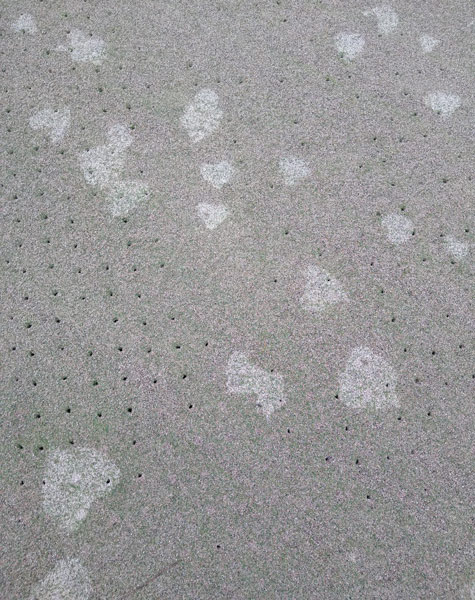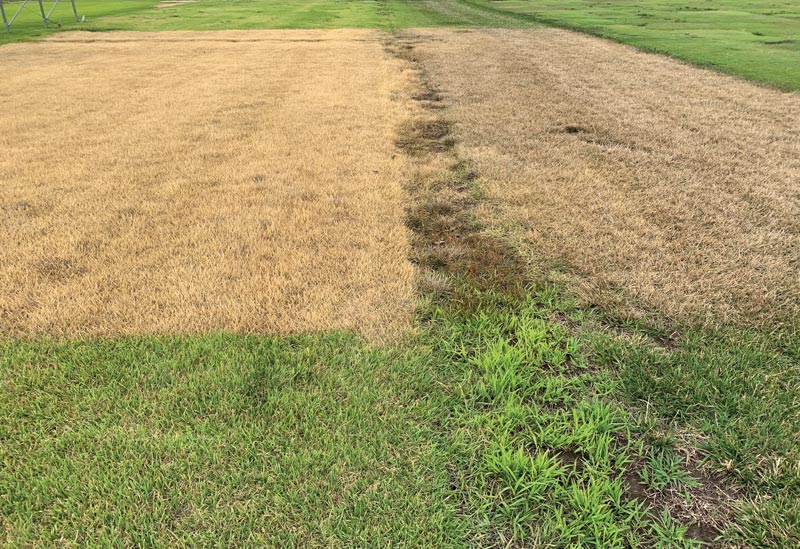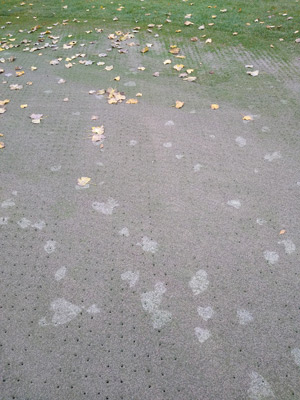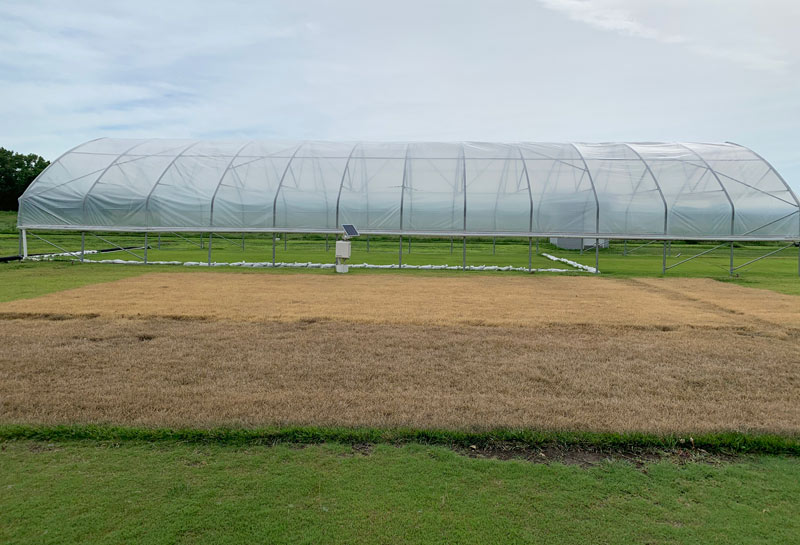GCM’s Photo Quiz is presented in partnership with STEC Equipment.

Problem A: Spots of lighter-colored turf

Location: Plymouth, Mich.
Turfgrass area: Putting green
Turfgrass variety: Bentgrass/Poa annua
Problem B: Brown turf

Location: Manhattan, Kan.
Turfgrass area: Research plots
Turfgrass variety: Zoysiagrass (left) and tall fescue (right)
Scroll down for answers.
Problem A: Spots of lighter-colored turf

These irregular shapes of lighter-colored turf are not a new type of pathogen. They’re actually not a problem at all — just a neat observation by an alert Photo Quiz reader. This second photo should give you a better clue as to what caused them.
A light rain of less than a tenth of an inch occurred while the crew was aerifying and topdressing this green. Located behind the green is an 80-foot cottonwood tree that litters the green with some sort of debris almost daily. These lighter areas are where leaves from the tree fell on the freshly aerified and topdressed green and protected the sand from the light rain. The spots disappeared a couple of minutes after this photo was taken.
Photo submitted by Doug Palm, CGCS, superintendent at Hilltop Golf Course in Plymouth, Mich., and a 34-year GCSAA member.
Problem B: Brown turf

This large brown rectangle is known as a direct high-temperature injury, or DHTI. The turf plots at this university had a rainout shelter with plastic covering for a drought study. Unfortunately, a storm damaged the plastic, and a doctoral student had to cover the plots with extra plastic sheets for a few weeks before a new covering could be installed on the shelter. After the plots received some rain, the student drained the water and dried off the plastic sheets on the grass, but forgot to remove them for a few hours during the heat of a July day. After four hours, the student returned to find the turf completely bleached.
Upon consulting Jack Fry, Ph.D., the student was assured the turf would recover. The zoysiagrass came back first, followed by the tall fescue, and the area was fully recovered after about a month. Interestingly, there was quite a bit of white clover in the plots, which did not recover. The student thought he had stumbled upon an alternative to glyphosate, but soon realized the grasses are too resilient.
Photo submitted by Manoj Chhetri, Ph.D., a graduate research assistant in the Department of Horticulture and Natural Resources at Kansas State University in Manhattan, Kan., and a three-year GCSAA member.
Editor’s note: Have a photo of an on-course anomaly? GCM would love to have a look! Email it to Photo Quiz author John Mascaro.
John Mascaro is the president of Turf-Tec International.